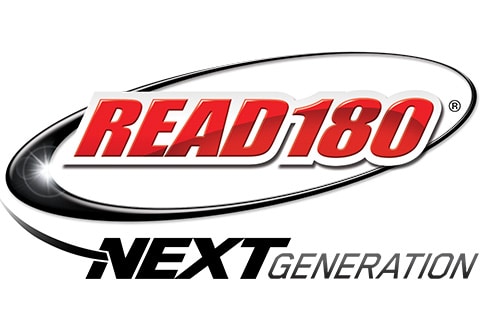Using Blended Tools to Maximize Instructional Time

Since the invention of the modern high school with courses and credits, students have students have struggled with the literacy demands of challenging coursework. Failure in content areas resulted in the requirement to repeat the course. Widespread failure resulted in massive dropout rates.
Based on over twenty years of research, READ 180 was developed to assess, differentiate, and quickly boost literacy skills so that struggling students could achieve success across their coursework. The program is designed to meet the instructional needs of teachers while helping students meet the rigorous expectations of the new standards and experience success on the new assessments.
Often deployed in a rotation model, the READ 180 program supports four instruction strategies:
- Whole Group Instruction: knowledge and vocabulary building strategies for educators and exemplary texts for students at multiple levels, both informational and literature.
- Small Group Learning: close reading of text, gathering evidence, and sharing their understanding and knowledge through a variety of research and writing tasks.
- Modeled & Independent Reading: students engage with a wide variety of literature and informational text; educators monitor student progress towards independence with complex, grade-level text.
- Adaptive Learning: individualized practice in reading, spelling, vocabulary, and writing.
Curriculum-embedded and criterion referenced assessment provide real time feedback and allow educators and students to track literacy trajectories toward college and career readiness. Students are able to practice next-gen assessment items that prepare them for new tests.
In a single period READ 180 is often used on an A/B schedule. The first day is kicked off by 20 minutes of whole group instruction followed by about 30 minutes of one station with a quick whole group wrap up. The second day includes two station rotations with a whole group wrap up–over the course of two days, students experience all four literacy modalities.
READ 180 can also be used in a double period where students experience all four modalities daily. Napa Valley Unified School District experienced big literacy gains between 2011 and 2012 using a 90 minute block.
For struggling students, READ 180 is often used to complement a traditional English class in a double block. READ 180 is available on iPad. In many station rotations models, students experience a disjointed instructional program where the components are not well integrated. READ 180 draws data from multiple assessments to create a literacy trajectory for every student. READ 180 was blended before we knew what to call it. Implemented with fidelity, the program produces reliably strong gains in literacy rates.
For more information on how to maximize instructional time read Scott Toonder’s post.
Scholastic’s READ 180 is a Getting Smart Advocacy Partner.
This blog is brought to you by The Nellie Mae Education Foundation as part of a series on blended humanities. For more stayed tuned for the Getting Smart on Blending Middle Grade Humanities bundle and see the other posts in this series:








Terace Viney
Read 180 is a new program to me. What I like best about the rotation model is that although it is differentiated, the expectations and stations are consistent and predicable for the students. I like the idea of still maintaining that important whole group aspect of the classroom. The part I'm not sure on, is how technology plays a role. I saw Read 180 is available on iPad, but what does that look like?